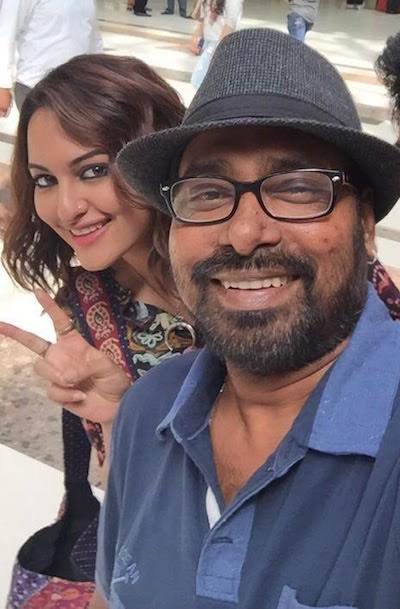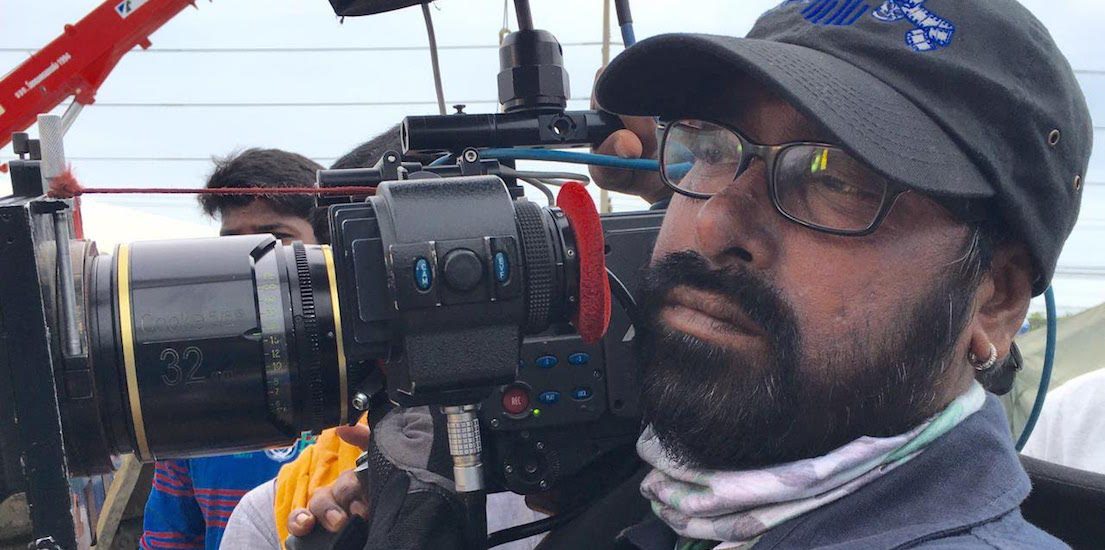The shots in Akira had to be shaky and real – R. D. Rajasekhar
With thirty films to his credit down South, Cinematographer R. D. Rajasekhar has worked across various genres with the best in the industry and recently made an entry into Hindi cinema with AR Muruguadoss’ Akira.
The DOP talks to Pandolin about the challenges of shooting his first Hindi film, about remakes in general and working with a female hero. He also discusses the planning that he had to do, not just in context with the action sequences, but with the story that unfolded within those sequences.

R D Rajasekhar
Cinematography is a very critical aspect of filming an action thriller. What is the kind of preparation you went through for the film?
Akira, as you would know is a remake. So the first thing I did was to see the original (film). That already gave me a clear picture of the kind of look and feel and style that we had to achieve. Although when I discussed it with AR (Murugadoss, director), I realized that the kind of feel he wanted to achieve was quite different from the original. Since the most important job of a DOP is to cater to the director’s vision, we tried to create the setting that he had imagined. A more ‘Hindi-film’ like setting, based in Bombay and so on.
READ: I TREATED SONAKSHI SINHA AS THE HERO OF THE FILM – AR MURUGADOSS
Since it is an action film, you must have worked in close association with the action director Anal Arasu. How have you’ll choreographed the action scenes?
I have done a lot of films with Anal (Arasu), and we have always worked in a good spirit. But this is the first time that I worked with him on a heroine-based action film. And yet this not a woman-centric film. It is a hero kind of a film, just that a female is the hero. And that is why Anal treated her like a hero only. And Sonakshi was trained very well. She had a lot of uniformity and consistency in her performances. So that helped us a lot because she could perform the action quite easily. In each frame, she maintained a consistency of performance. It was as if she knew the whole script by heart. Each look, each action, each frame, the way she carried out the whole film was commendable.
It was as if Sonakshi knew the whole script by heart
What was the camera set up like? Was it more handheld or steadicam? What determined your choice of the camera?
This film has a very raw kind of a feel. Everything had to look real. That is why the camera we used was the Red Dragon Censor Camera. I have shot around six to seven films with it and it is quite easy to handle, considering it is not very big in size. And I took this decision also because it was a handheld shoot. If you go to see, the film is a search. Everyone is looking for something and the tension that is prevalent throughout the film would be more visible through a camera that is also searching. The shots had to be shaky and real; I didn’t even use a tripod. Even the height at which the camera was held was to resemble the normal eye level. Like we are seeing things happen for real. I could not put the camera on a height and roll as that wouldn’t look real. Hence the decision to use a Red, because the mood we wanted to create would be best created with that.
What kind of equipment, rigs and lenses used for the film?
The lenses I used were Ultra Prime lenses. Because like I mentioned before, this film has a stark contrast. It could not do with a flashy look. It had a half light, contrasting kind of a mood, which had to be created. I am generally used to using the 5 I lenses but I felt that for this film Ultra Prime would be more appropriate.

With Sonakshi Sinha during Akira
What were the challenges you faced with lighting, considering the look of the film is dark and edgy? What are the kind of lights you used?
Most of the film is shot in a forest. And the most important thing to understand there is that the light keeps changing. The light at 7 in the morning would be different from that at 1 in the afternoon. So that would cause a lot of struggle in the continuity. The only way to help that was to cut the whole day light. Which meant that the sequence had to happen between 5-7 in the morning. So I just picked one look, say at 7.30 and used just one setup to recreate that again and again. I mixed a warm light with a blue light to get that look.
And then there was the climax, which had to be shot in an abandoned church. While we were shooting, it was raining heavily. But on screen you couldn’t show that it is raining. So I used that feel to create a mood and mixed it with some warm light. It came out quite well in the end, the climax portion, but it was quite a challenge.
Most of the film is shot in a forest. And the most important thing there is that the light keeps changing
What was your equation like with the director?
When I first read the script, I found it really interesting. In fact I feel it is better than the original because there is a social cause that has been added to the film.
Apart from that, I have worked with AR Murugadoss on the original Tamil version of Ghajini. So I know him since then. We are used to discussing each shot. Whenever we start shooting a scene, we have a discussion over what could be the opening shot; I give him around five to six options, and then he chooses what he likes the best. Because whenever I think, I think only about the best shot I can take then, but he has the whole film in mind. So it is important that he is satisfied with what we are shooting. And that also makes it important for me to maintain a consistency of light throughout the film. It helped me maintain the isolation that came with the character’s POV.



